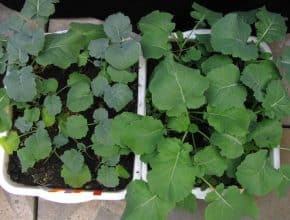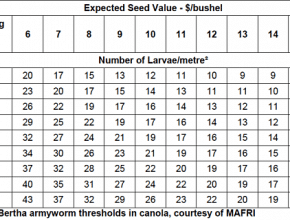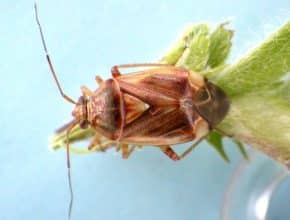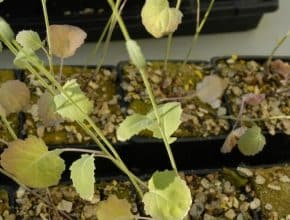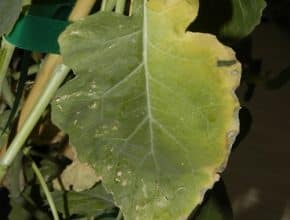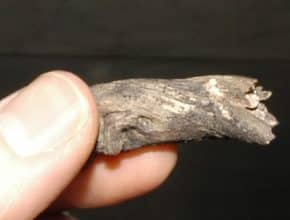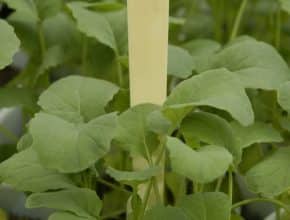Home / Canola Watch / March 9, 2012 - Issue 7
-
Most of you did not get to attend CanoLAB 3-D in Edmonton this week, so this edition of Canola Watch will bring you the highlights…
-
This article contains 5 quick weed control tips. Tip 1: Herbicide efficacy often goes down in dry conditions because most plants — weeds and crop — will develop a waxy layer and curl up their leaves to reduce moisture loss. These two survival responses also reduce herbicide uptake…
-
Growers cannot expect natural enemies to provide enough immediate control to reduce the pest threat to canola in that year. Growers will still have to spray if economic thresholds are reached. The key is to pay attention to thresholds and spray only when necessary. This will help maintain the natural enemy numbers…
-
Our current economic threshold tables for lygus in canola may be too low when applied to current canola production systems across the Prairies. If the stand is healthy and growing fast, growers are reportedly doubling or tripling thresholds. There is no data to support this, but future research needs to reexamine the thresholds with respect to our newer varieties of…
-
Visual assessment of symptoms is not good enough for an accurate diagnosis because symptoms can have many causes. The station hosts used purpling as an example. Purpling is often considered a tell-tale sign of phosphorus deficiency, but purpling is actually a response to any stress…
-
For every 5 pounds of nitrogen a canola plant takes up, it needs 4 pounds of potassium. Most Prairie soils still have adequate potassium reserves, but tight canola rotations and high canola yields will be mining the soil and deficiencies are starting to show up on some farms…
-
Seed treatments are, for the most part, very effective against canola seedling diseases fusarium, pythium and rhizoctonia. But plant pathologists expect that continued tight canola rotations will select for seedling disease pathogens that will overcome these treatments…
-
The key messages from this station: —Keep an open mind when scouting a field for problems. Symptoms can have many causes, and it can be a costly mistake to jump to conclusions before considering all possibilities. Many probable causes were discussed ranging from diseases to insects when describing sick or non emerging plants. —Environmental stresses like heat during bolting through…


